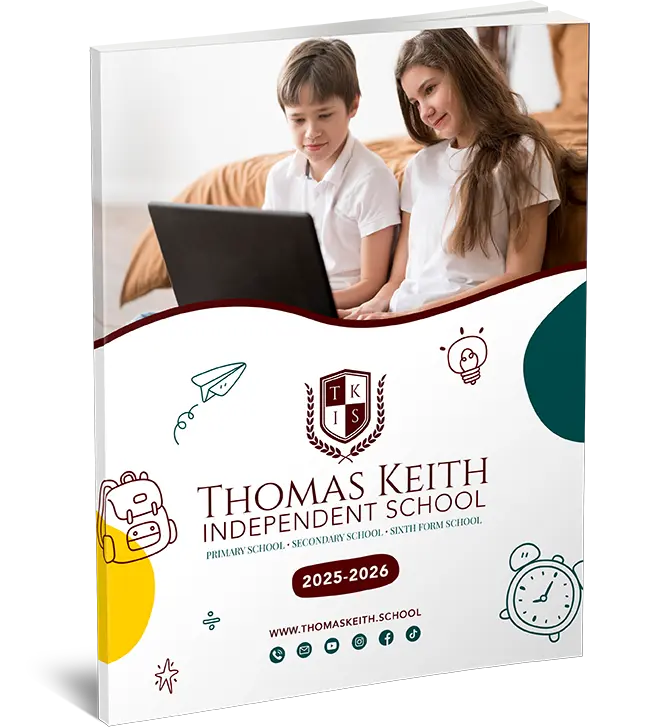
List Poems KS1
Introduction to List Poems KS1
Poetry has a special allure since it can introduce language, rhythm, and creativity to young students. Poetry offers KS1 (Key Stage 1) students a chance to explore sounds, emotions, and imagination through brief, memorable lines and accessible subjects, making it more than just a literary genre. The foundation for literacy abilities, vocabulary growth, and a lifelong love of reading is laid at this early point in primary education by fostering an appreciation of poetry.
This article will explore several strategies for teaching and introducing poetry to KS1 children, including the importance of poetry, the kinds of poetry that are appropriate for beginning readers, and useful methods for incorporating poetry into the classroom. We’ll also examine examples from the Thomas Keith Online Independent School, a cutting-edge establishment renowned for its creative teaching methods that make poetry an engaging component of the KS1 curriculum.
The Significance of Poetry in KS1
Developing Reading Proficiency Poetry cultivates a passion for language and words. Children develop key reading abilities, such as phonemic awareness and word recognition, through rhyme, rhythm, and repetition. Poems frequently creatively employ well-known words to improve vocabulary and comprehension in young readers.
Promoting the Expression of Oneself Children can freely express their ideas, feelings, and thoughts through poetry. Children can experiment with words and express feelings in ways they might not feel comfortable doing in other types of writing because it’s a format that doesn’t exactly follow prose.
Improving Speaking and Listening Abilities Children are encouraged to listen intently and speak clearly when poetry is recited. They gain knowledge of tone, expression, and voice modulation—all essential components of successful communication—when they read aloud.
Developing Creativity and Imagination A child’s imagination is stimulated by poetry, which creates a universe in which anything is imaginable. Children learn about the world through poetry, whether they are reading about mythical animals or everyday animals in creative ways.
Poetry Types Appropriate for KS1
1. Children’s Songs
One of the first types of poetry that youngsters are exposed to is found in nursery rhymes. These poems, which are rhythmic and simple to memorize, expose young students to linguistic patterns. Children in KS1 can study and recite classics like Humpty Dumpty and Twinkle, Twinkle, Little Star.
2. Couplets that rhyme
Young students benefit greatly from rhyming couplets, which are composed of two lines that rhyme with one another. They aid in children’s recognition of rhyming patterns and are straightforward and rhythmic. For instance: “My cat enjoys sitting,
He fits somewhat on a cosy mat.
3. Poems in Acrostic
Because they can use any word to build their poems, KS1 pupils find acrostic poetry to be intriguing. Every line in an acrostic poem starts with a letter from a word the poem is describing. An acrostic for “CAT,” for example, may be: Ingenious and adorable,
Playing all the time,
Happy tail wagging.
4. Haikus
Children learn about syllable counting and the beauty of simplicity through haiku. Haikus are a fantastic approach to introducing structured creativity because they only have three lines, with five syllables in the first, seven in the second, and five in the third. Simplified themes, such as animals or seasons, are effective for KS1.
5. Poems on Shape
Young children find shape poems, also known as “concrete” poetry, visually interesting because the text is structured in a way that represents the poem’s theme. A poem about a star, for instance, might be formed like one, combining literary and visual elements.

Effective Techniques for Teaching Poetry in KS1
1. Recitation and reading aloud
Poems come to life when read aloud. To catch kids’ attention, teachers should read with passion and use a variety of voices and facial expressions. Students can gain confidence and practice using language and expression by being asked to recite their favourite poetry.
2. Including Movements and Actions
Poetry gains a physical dimension through gestures and actions. Children can imitate the movements of the animals mentioned in an animal poem, for example, making the reading experience engaging and enjoyable. Forkindest ]hetic learners who benefit greatly from hands-on exercises, this method works particularly well.
3. Making use of illustrations and visual aids
Visual aids can improve understanding, especially for young students who are only starting to learn to read. Teachers can assist kids make the connection between words and visuals by explaining new terms and concepts using examples, flashcards, or photographs.
4. Using Writing to Promote Creativity
Teachers might encourage children to write their poems when they have become familiar with different forms of poetry. An acrostic poem or a few rhymes can give them confidence and inspire them to try new things with language, so this doesn’t have to be a difficult task.
5. Examining Poetry Inspired by Nature
Young students are particularly drawn to the concept of nature. Poems on seasons, animals, or weather can be relatable and amusing. Children are better able to connect the words they use with their environment when they go outside to explore nature and then write poetry about what they see.
![]()
Thomas Keith Online Independent School is an illustration of innovative teaching.
List Poems at KS1 at the Thomas Keith Online Independent School is renowned for its creative methods. Thomas Keith’s teachers make poetry an interesting and participatory experience by combining traditional and digital materials.
Digital storytelling is one of their well-liked techniques, in which kids make brief animated films based on their poetry. Through the use of technology and poetry writing, this method lets kids watch their creations come to life. The Thomas Keith School’s emphasis on poetry from various cultural traditions is another distinctive feature of its curriculum. Children who are exposed to poetry from other cultures develop an early appreciation for the diversity of world literature.
Combining Poetry with Other Topics
1. Connecting Science and Poetry
Science teachings can be enhanced with poems about plants, animals, and seasons. Children can reinforce their scientific and linguistic skills by writing a little poem or haiku on butterflies, for instance, after learning about them.
2. Blending Art and Poetry
Children can illustrate certain stanzas or depict the poem’s concept through painting or drawing after hearing it. Here, shape poems are a perfect exercise since they seamlessly combine language and art.
3. Syllable counting and mathematics
Basic mathematical ideas, such as counting syllables in haiku or rhythm patterns in rhyming poems, can be included in poetry exercises. These activities maintain the emphasis on poetry’s creative element while gently reinforcing counting abilities.
Teaching Poetry Using Technology
Technology integration can be very advantageous, particularly in mixed or online learning settings. Children may compose, record, and share their poems in interesting ways with the help of interactive poetry applications, digital storytelling tools, and internet platforms. These tools are used by online learning systems such as Thomas Keith’s to create a multimedia, interactive poetry experience.
Among the useful resources for online poetry instruction are:
Digital Storyboards: Applications that assist kids in illustrating poems.
Students can improve their speaking and listening abilities by using recording software to capture their readings.
Online games that emphasize word patterns, rhyme schemes, and poetic frameworks are known as interactive poetry games.
![]()
FAQs
Q1. Why does poetry matter to KS1 pupils?
Poetry is crucial for young students because it fosters self-expression, creativity, and literacy. Additionally, it improves language, speaking, and listening abilities.
Q2. How can I engage KS1 students with poetry?
Make use of visual aids, promote recitation with actions, and use a range of poems. Learning may be made fun with exercises like creating shape poems, utilizing digital resources, and relating poetry to nature and art.
Q3. Which kinds of poetry are appropriate for KS1 students?
For young students, nursery rhymes, rhyming couplets, acrostics, haiku, and shape poems are all appropriate since they offer diversity and accessibility.
Q4. What is the poetic philosophy of Thomas Keith Online Independent School?
Thomas Keith School makes poetry interesting by using cutting-edge techniques like multicultural poetry and digital storytelling, providing kids with a wide-ranging and participatory experience.
Q5. How may learning poetry be aided by technology?
Poetry is made more interesting by technology, particularly in online learning environments, thanks to interactive tools like digital storytelling platforms, poetry applications, and recording software.
Q6. How do I write a list poem for KS1?
To write a list poem, start by choosing a topic (e.g., animals, favourite foods, or things you see in nature). Then, list words or phrases that describe your topic. Use simple and clear language, and try to make your lines interesting by using adjectives or verbs.
Q7. Can a list poem rhyme?
Yes, a list poem can rhyme, but it doesn’t have to. Some list poems focus more on creating a rhythm or repetition, while others may include rhyming words or phrases.
Q8. What are some examples of list poems for KS1?
Here’s a simple example of a list poem:
Apples, pears, and bananas,
Juicy, sweet, and bright,
Pineapple, oranges, and peaches,
Q9. Why are list poems good for KS1 students?
List poems are great for KS1 because they help children build vocabulary, practise rhythm, and learn to express ideas in simple, creative ways. They also allow young writers to focus on making lists that are descriptive or imaginative.
Q10. How can I make a list poem more exciting?
You can make a list poem more exciting by adding descriptive words, using similes or metaphors, and trying different ways to present your list. For example, instead of just listing “flowers,” you could write: “Red roses, yellow sunflowers, and purple daisies dancing in the breeze.”
In conclusion
Poetry opens a world of creativity, imagination, and language for KS1 students. Poems provide a flexible instrument for developing basic literacy abilities, ranging from nursery rhymes to haiku inspired by nature. As innovative schools like Thomas Keith Online Independent School have shown, instructors can make poetry a treasured part of children’s early learning experiences by combining a variety of instructional methodologies, creative activities, and a blend of traditional and digital materials. Poetry not only fosters literacy development but also develops young brains by enabling them to appreciate the beauty of words and igniting a lifelong love of reading.







